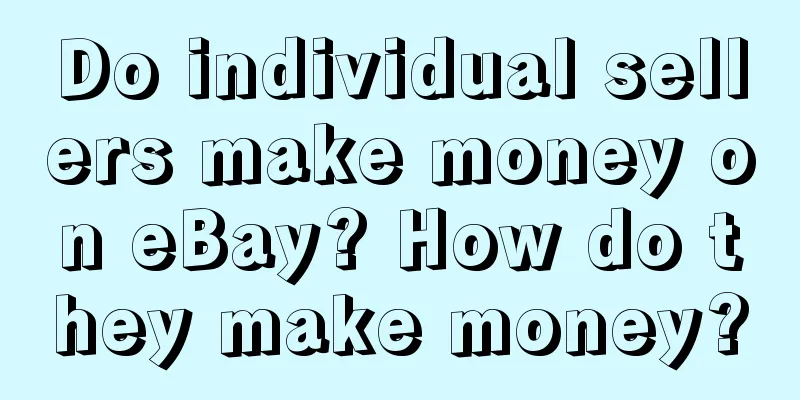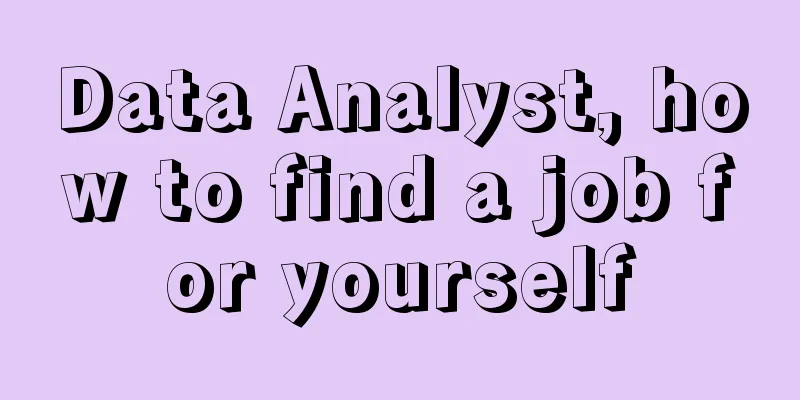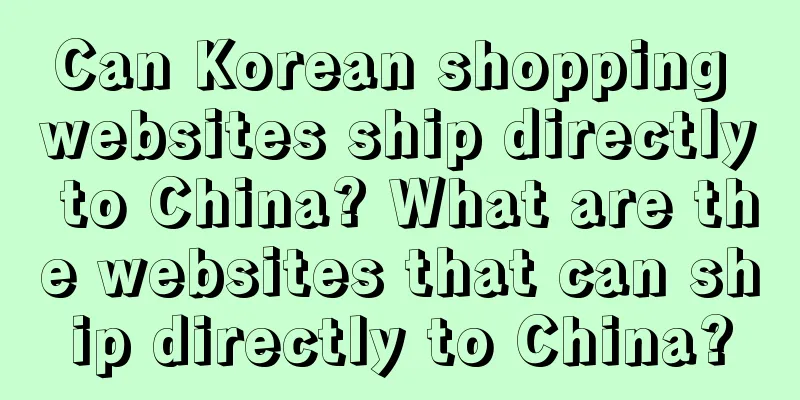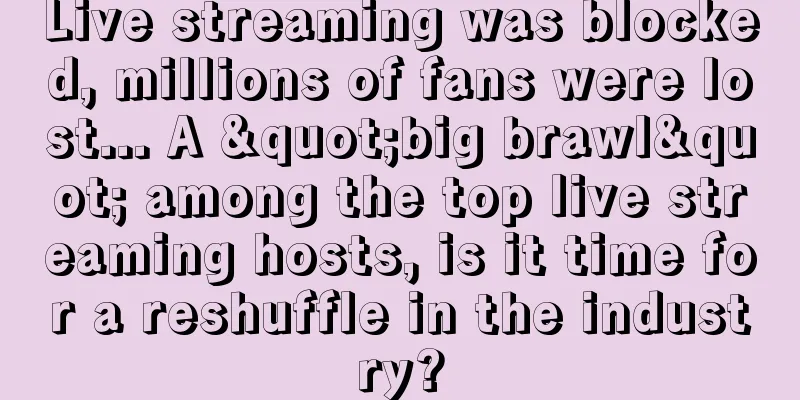Cool or terrible, should brands do AI advertising?
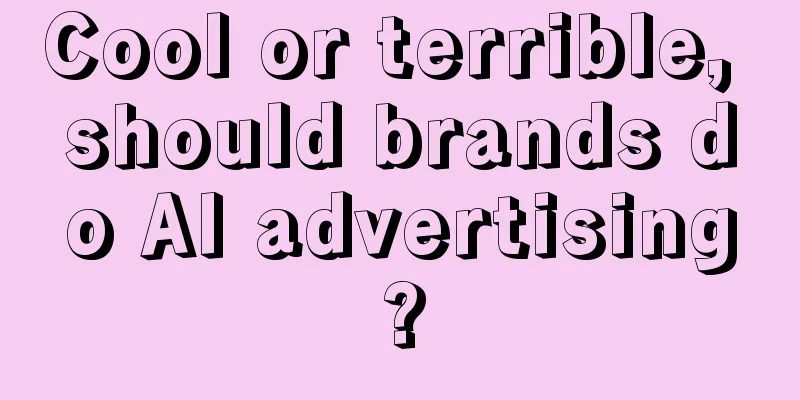
Since OpenAI released Sora in February this year, discussions about AI-generated videos have never stopped. In the first half of this year, a large number of video generation models appeared, including Douyin's Jimeng, Kuaishou's Keling, Meitu's WHEE, iFlytek's Spark Painting... Directors, cameramen, and editors: OK, it's our turn to be unemployed? Marketers: Great, I'll save some money. 1. What else can AI-generated commercials do besides saving money?In the battle for the stock market, cost reduction and efficiency improvement are the first priority. Previously, a global fast-moving consumer goods giant told Morketing, "When we place brand advertisements, we will also ask for some resources that may promote conversions," not to mention new consumer brands that have more extreme ROI requirements. Brands will naturally be very cautious in their budgets for advertising films. The emergence of video generation models at this time is like finding a pillow for sleepy advertisers. The "2024 China Advertiser Marketing Trend Survey Report" released in June this year shows that 78.9% of advertisers expect to use AIGC, an increase of 9 percentage points compared with last year. Among them, advertisers use AIGC mainly in creative content generation, such as text-to-text, text-to-image, and text-to-video. There are two reasons why advertisers choose AIGC commercials. On the one hand, it is to save costs. On the other hand, they want to use new technologies to do something new. They hope to better express their brand concepts and communicate with young people through AIGC. Toys R Us, a world-renowned toy manufacturer, launched an AI-generated commercial in June using Sora. The commercial describes how Charles Lazarus, the founder of Toys R Us, gradually transformed a bicycle store into a toy kingdom in the hearts of children. The whole film is full of fantasy, bringing people back to their childhood. Regardless of the effect, the cost of this video is shocking enough. As Sora's first commercial advertisement, Toys "R" Us said that the video took only a few weeks from conception to final completion. Song Donghuan, the founder of the AI content community StoryStorm, also estimated the production cost of Sora at the 5th China Smart Large Screen Industry Development Summit, which is about US$2,500 per minute. Adding the material to the film ratio, that is, for a 3-minute film, you may need to prepare a computing power cost of about RMB 200,000. This number is really high for ordinary people, but for companies that spend millions to shoot a commercial, it is normal to spend millions for 15 seconds, not to mention three minutes. 200,000 is just a small amount. Compared with traditional TVC shooting, which often takes months, AIGC commercials that save time and effort will surely make more brands reconsider the necessity and cost of traditional TVC. In addition to cost savings, brands that choose AIGC commercials also value their own trendy expressions. Dong'e Ejiao, a time-honored Chinese brand, has been focusing on occupying the young and high-end market in recent years. How to express that the brand is on the same side as young people? Dong'e Ejiao's two consecutive solar term commercials were generated by AI to show that time-honored brands can also keep up with the trend. Although the two films did not become a big hit, the overall evaluation was good, and the fresh images and imagination were the most frequently mentioned. 2. AIGC advertising film has lost its soul, has reducing costs and increasing efficiency become a false proposition?But the question that all marketers should think about is that although costs have been cut, have the effects really been achieved? Let us review Kotler's definition of TVC in "Marketing Management": Television advertising is an effective way to introduce a company and its products to customers, enhance customer preference and loyalty, and increase sales and profits. In other words, a qualified TVC has at least two elements: one is to reflect the brand image, and the other is to make more consumers fall in love with the brand through this film. However, the pain point of AIGC commercials is that they are too controversial. There is no guarantee that the generated works will be liked by most consumers. Netizens' aversion to AI commercials may even implicate the brand. The AIGC commercial for Toys R Us mentioned above received polarized ratings. On X, some netizens criticized it: "It's ironic to make an advertisement about children's infinite imagination and use soulless AI to perform it"; "We were once excited about the rebirth of Toys R Us, but now we want to send it to hell with our own hands. This is undoubtedly a loud slap in the face for the entire toy industry, not to mention the creative game concept. This is simply an insult to all participants." Compared with performance advertising, TVC actually uses more lasting emotions to connect with consumers. A look or an expression of emotion in the commercial will affect the feelings of the audience outside the screen, but how to accurately convey emotions is what AIGC commercials are not good at. Some time ago, the AI-generated short film "1984 Chinese Spirit" dedicated to the 40th anniversary of Jianlibao was also criticized by netizens: it was obviously intended to express the Chinese people's "ambition, vigor, backbone, sharpness, arrogance, and spirit", but the film generated by AI only made people feel a sense of "decline". Why was this commercial evaluated in this way? Essentially, it was because the audience had a bias in expectations. The purpose of this commercial was to express the upward spirit of the Chinese people over the past 40 years through the exciting moments in the Olympic arena. So according to inertial thinking, the audience expected to see grand scenes, the audience's cheering and joyful expressions, the athletes' sweat, and a series of other textured images, because most tribute-style commercials are shot in this way. Of course, the audience saw the big scenes, and these elements are also present in the commercials, but under the rendering of AI, the two most critical words "texture" are missing. In fact, the details of this commercial have been done very well, but the texture here refers more to a sense of reality, a texture that has existed. When telling the past, the truth is more convincing. The underlying logic of AI-generated videos is to teach a model to understand the laws of operation of objects in the physical world, and then create something new. This sounds really romantic. But it should be noted that AI's advantage lies in creation, not simple imitation and restoration. It is understandable that brands use AI to generate commercials in the hope of trying some new technologies to make their brand image younger, but new technologies are risky and should be used with caution. It is easy to overturn if AI is used to force traditional commercials. Zhang Fengrong, CEO of Beijing Tianyukong, told Morketing: "AIGC advertising films are definitely an advancement in technology and the times, but whether they can carry the emotional value connection between the brand and users needs to be improved. At present, the production and efficiency of product display are good. Needless to say, the advantages can certainly save some costs, but after all, there is still a lack of insight thinking, creative humanistic thinking, etc. The resulting film may not be able to fully meet the selling points that fit the brand and product, and it is not easy to meet the modification opinions of many brand owners." Shiqu SVP Mu Dao also has a similar view. AI is a new type of productivity, but from the current perspective, current AI technology does not have the ability to produce advertising content. "It is true that many brands have explored AI production, but at best they can only be regarded as marketing gimmicks under information dislocation. It is worth encouraging, but the actual effect is better than nothing." Even more pointedly, he pointed out: "The advantages we thought of in the early days, such as improving efficiency, reducing costs and increasing efficiency, have not actually happened. We have only entered a new efficiency and cost process. At least at the content production level, especially in the extremely high-end creative industry, AI's current content production capabilities do not even meet the basic threshold. After experiencing the Metaverse and Web3, rationally speaking, we should not rashly try new things when the infrastructure is incomplete, unless you are Coca-Cola or Chanel." 3. What does the praised AIGC commercial look like?So, how did Coca-Cola do it? “Make things things, not things to things”, in simple terms, means people control technology, rather than technology countering people. As Zhang Fengrong said, “The core of advertising is still selling strategic thinking and creativity. I believe that AI is a tool used by advertising people to better serve creativity and add points.” Using AI, but using it as a negative example, can also create interesting commercials. During the Super Bowl, the commercial "Field of Fake" by BodyArmor, a sports drink brand under Coca-Cola, is a classic example. The first half of the film was generated by AI, with twisted limbs, strange expressions, chaotic images and a narration: Artificial flavor. The visual adhesion is transformed into a sticky feeling in the mouth. This synaesthesia instantly reminds people of the taste of drinking artificial flavored beverages, which is indeed clever. The second half was shot with real people, and the picture instantly became much more refreshing. The copy pointed out that "nothing in sports should be artificial because there's no substitute for real sweeteners, real flavors, real love of sport." The film uses the contrast between the front and back to emphasize the authenticity of the product's ingredients, taste, and efficacy, giving people a visual impact. The team took advantage of AI's shortcomings and presented an advertisement that fits the product. Ele.me also combined AI and reality, using AIGC clips as transitions to add a finishing touch. In the film, Yihetang's ancient style recommendation officer was transformed into a little clerk through AI; the clerk held up a cranberry, and the AI transition made the fruit grow back on the tree... This is actually a very clever approach, which introduced AI elements to add some flavor to the commercial, while avoiding the discomfort caused by the large-scale use of AI. At present, Morketing believes that AI is suitable for some light advertising films, or even science fiction blockbusters. The simple imitation of reality will instead erase the advantages of AI, and the good steel will not be used on the blade. Just as Mu Dao said: "The human brain is always the most important competitive advantage. AI may help broaden some ideas and provide some new strategies for presentation, but the most touching part of a story must be the story itself." Text | Tiana The title image is from Unsplash, based on the CC0 protocol. |
<<: Shared bicycles will continue to rise
>>: Snacks are very busy, a "Disney" alternative for young people
Recommend
New changes to WeChat: If you do not renew your account, your customer management functions will be limited
The latest rule adjustment of WeChat for Business ...
Is Amazon a wholesale marketplace? What are the pros and cons?
Among cross-border e-commerce platforms, Amazon is...
In the period of consumption downturn, we should pursue "good failure" rather than "reducing costs and increasing efficiency"
In the current period of sluggish consumer market,...
Xiaomi's Chief Copywriter
Last night, Lei Jun gave another speech. Over the ...
How to choose a store name on Amazon? Naming tips
Amazon platform covers major markets around the wo...
How to calculate Shopee advertising fees? What are the fee standards?
As a cross-border e-commerce platform, Shopee is v...
How can I contact Shopee's account manager? How can I contact Shopee's customer service?
Merchants who want to join Shopee must first compl...
Does it cost money to open a Lazada account? Do I need to register a company to open a store?
When choosing a cross-border e-commerce platform, ...
In the era of private domains, why are brand mini-programs starting to build content communities?
In recent years, private domain traffic has change...
Experts' interpretation of Apple Vision Pro is ridiculously wrong
This article mainly discusses the Vision Pro heads...
What is the longest return time on Amazon? What should I pay attention to when returning goods?
As the world's leading online shopping platfor...
How to operate Shopee's 6.6 promotion? Operation strategy sharing
Shopee's 6.6 promotion is coming, and many sel...
180°, a big reversal of video accounts
WeChat Video Account has undergone a major transfo...
The birth of marketing is to clean up the technological revolution
Nowadays, marketing is in full swing in the market...
Finding opportunities to make money from products discarded by big companies
Finding entrepreneurial opportunities is a difficu...


